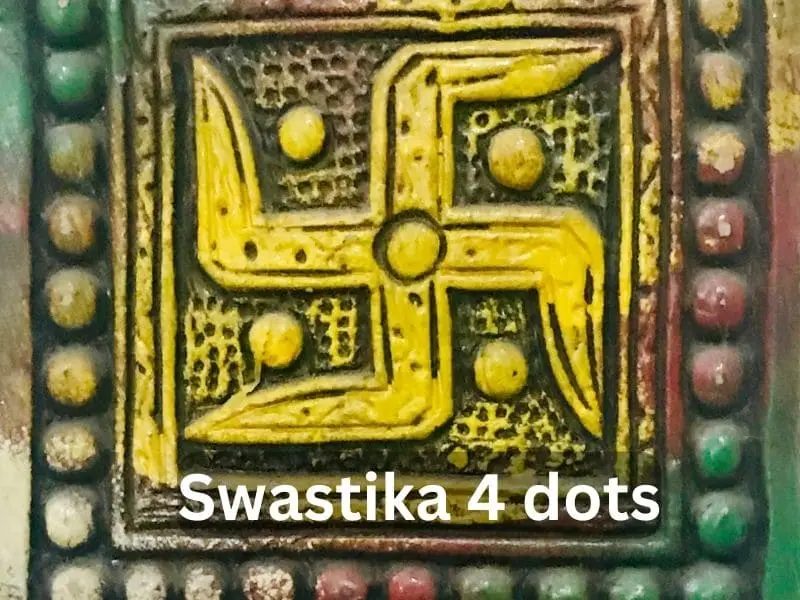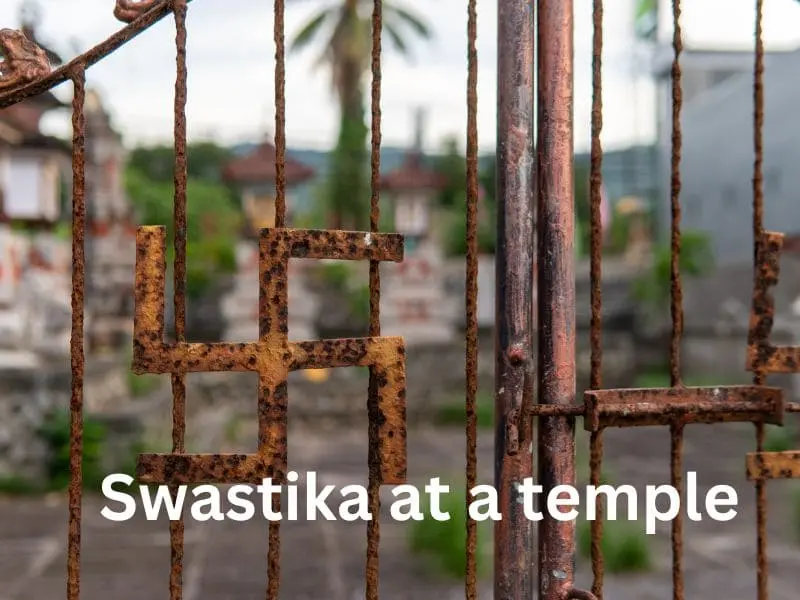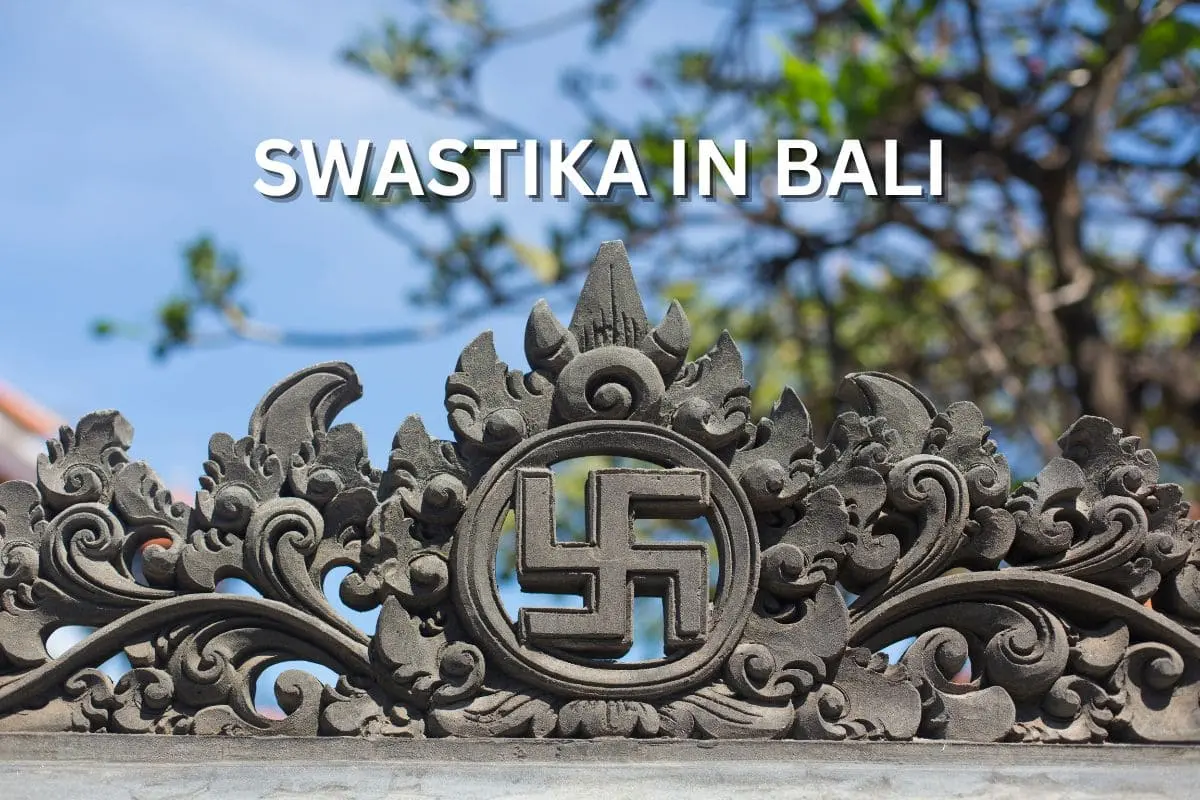The Swastika is a symbol that many people have seen. Around the world, it has been used in different ways for thousands of years. Some places have given it a bad name (like in Germany), but in Bali, it tells a different story. Sometimes this symbol is like a shock to see by tourists (especially from Europe). They grew up there with a different meaning to it. In Bali, the Swastika is all about good things. Let’s find out why it is so special in Bali and what it truly stands for there.
This post contains affiliate links. If you use these links to buy or pay for something, I might earn a small commission at no extra cost to you. It helps me a lot!
Klook.comOrigins and Meaning of the Swastika in Bali
The name, “Swastika”, has its roots in the ancient Sanskrit language. In Sanskrit, it combines two words: “Su”, which means “good”, and “Asti”, which means “to be”. So, when you say “Swastika”, you’re really saying “well-being” or “good fortune”. It’s a positive and hopeful word.
Now, if you look at it, you’ll notice it has four arms or branches. These aren’t just for show. They represent the sun’s journey: its rising, setting, and its highest and lowest points in the sky. It’s a way of showing respect to nature and understanding the world around us.
But there’s more to the design. Some Swastikas have four dots, and you might wonder what they mean. These dots are like a little mystery. They can stand for many things, like the earth, wind, fire, and water, or even the stages of life.

Historical and Global Presence of the Swastika
The Swastika is one of the world’s oldest symbols. Its story starts way back in the Neolithic era. This was a time before written language, but people still wanted ways to express themselves. They carved the Swastika on rocks, painted it on walls, and even used it on pottery. It was a sign that meant something important, even back then.
Fast forward a bit, and we find the Swastika in Hindu scriptures. Here, it’s a sacred symbol. It’s linked to well-being, prosperity, and the sun god, Surya. But Hinduism isn’t the only place where the sign made its mark. From ancient China to Native American tribes, this symbol pops up all over the world. Each culture gave it its own twist, but they all saw it as something good and powerful.
But not all stories have happy parts. In the 20th century, the Nazis took the Swastika and made it their own which some refer it as the Nazi cross. They turned it from a sign of good luck to a mark of hate. Because of them, many in the West now see the Swastika as a bad sign. It’s a sad twist for a symbol that once stood for so much good.
The Swastika in Balinese Culture

If you walk around Bali, you’ll see the sign on temples, shining brightly in gold or carved into stone. Schools have it, teaching kids about its importance from a young age. Even homes welcome guests with the Swastika on their doors. It’s not just a decoration; it’s a sign that says means good fortune, well being.
In Bali, it’s more than just a design. It’s a part of life. The Swastika is used in ceremonies, big and small. When there’s a festival, you can bet the you can see it there, blessing the event. It’s also there in quiet moments, like in daily prayers or rituals. For the Balinese, the Swastika is a reminder of the good in the world.
But the it is not just about celebrations and prayers. It’s also a protector. In Bali, people believe it keeps away bad things. It’s like a shield against evil, harm, and bad luck.
In short, the Swastika sign is a big deal in Bali. It’s a symbol that touches every part of life, from the sacred to the everyday. It’s a sign of the island’s spirit, and it shows the world what Bali is all about.
Misinterpretations and the Need for Cultural Awareness
Symbols are powerful. They carry stories, beliefs, and emotions. But when taken out of their home culture, they can get twisted. The Swastika is a prime example. In places like Bali, it’s a symbol of good. But in other parts of the world, it’s seen differently, all because of how it was misused in history by the Third Reich.
This is the danger of not understanding symbols in their cultural context. A sign that means peace in one place might mean war/hate in another. It’s like a word that’s friendly in one language but rude in another. Without the right context, things get lost or twisted.
This is where education comes in. Schools, books, and even the internet can teach us about symbols and their true meanings. They can clear up myths and show us the real story. With the right knowledge, we can see symbols like the Swastika in their true light.
So with this I hope you won’t be too shocked all too much about this sign in Bali. It’s part of the culture there and a very different meaning then what it means to the west.
Sources used: https://en.wikipedia.org/wiki/Swastika and also the knowledge I obtained over the years in Bali
Hi I am Dwi. I am a blogger, travel agent and a mom of a lovely daughter and wife to a supportive husband. I customize and plan tours in Bali and islands nearby for a living and have been doing this for more than 14 years. Get in touch via contact [at] taletravels.com
